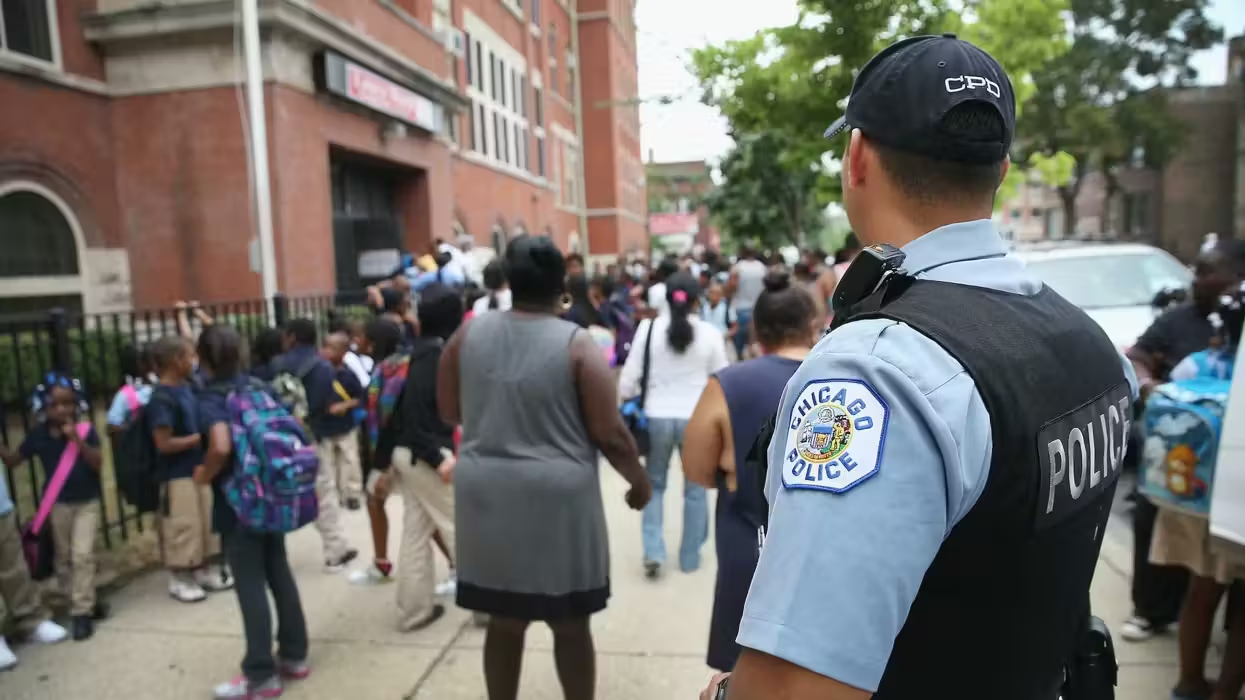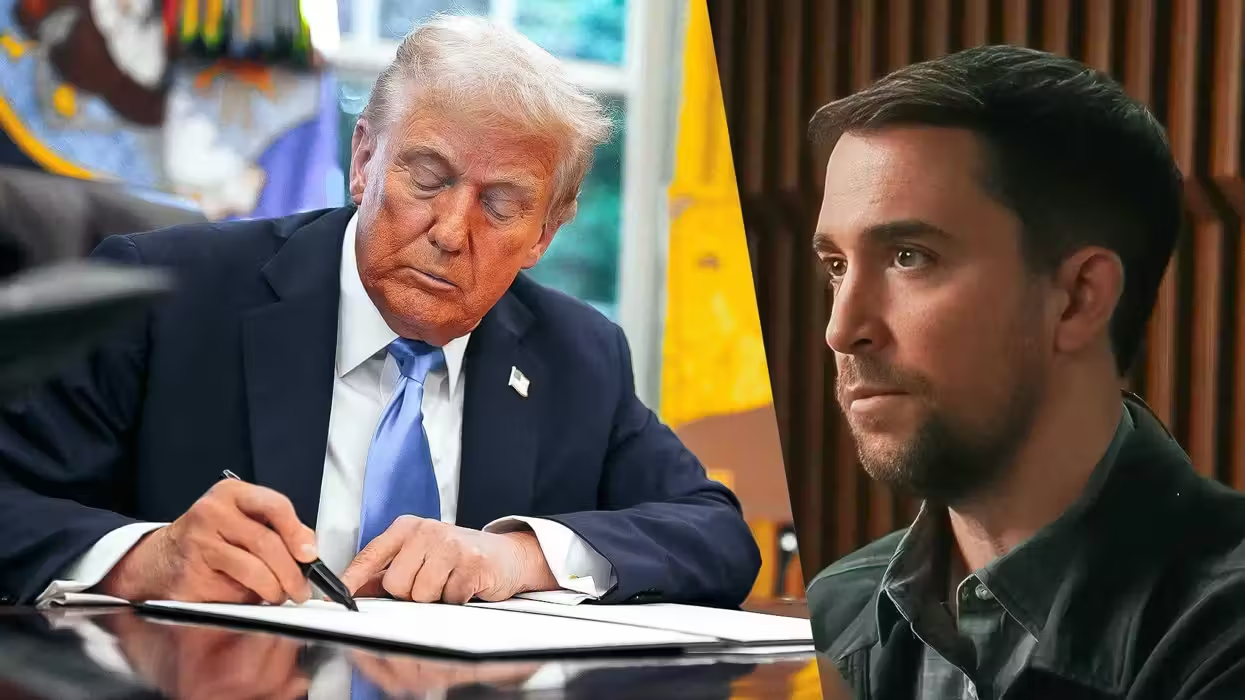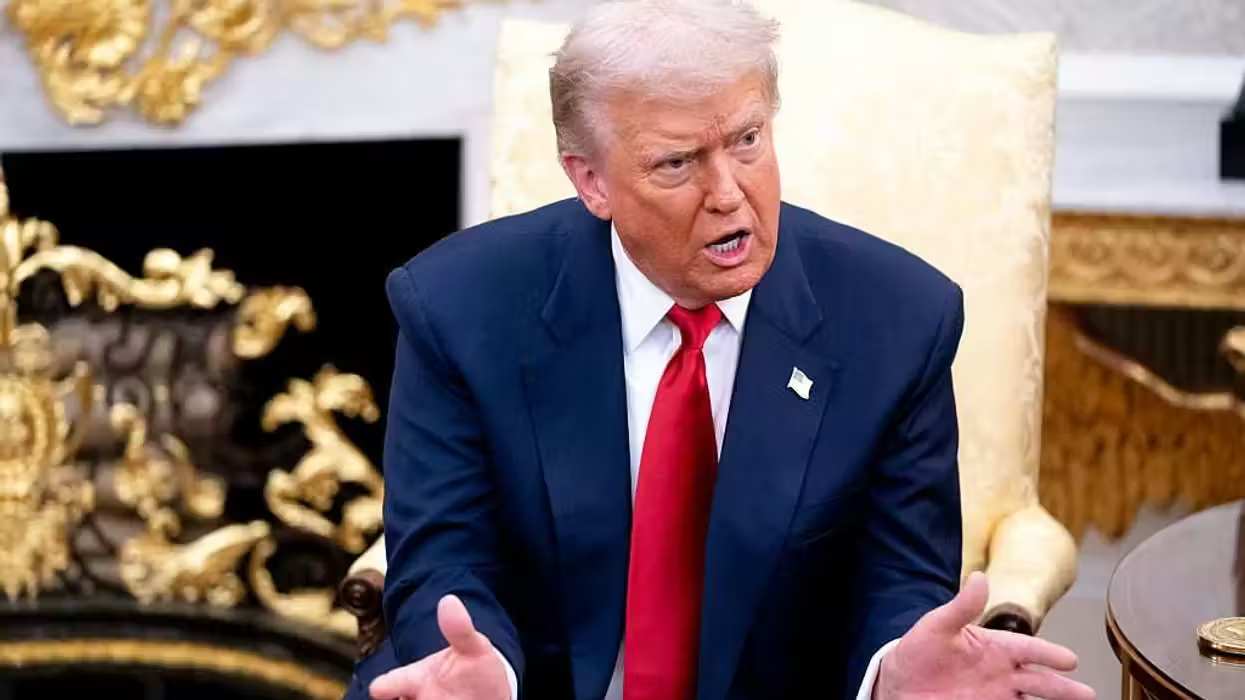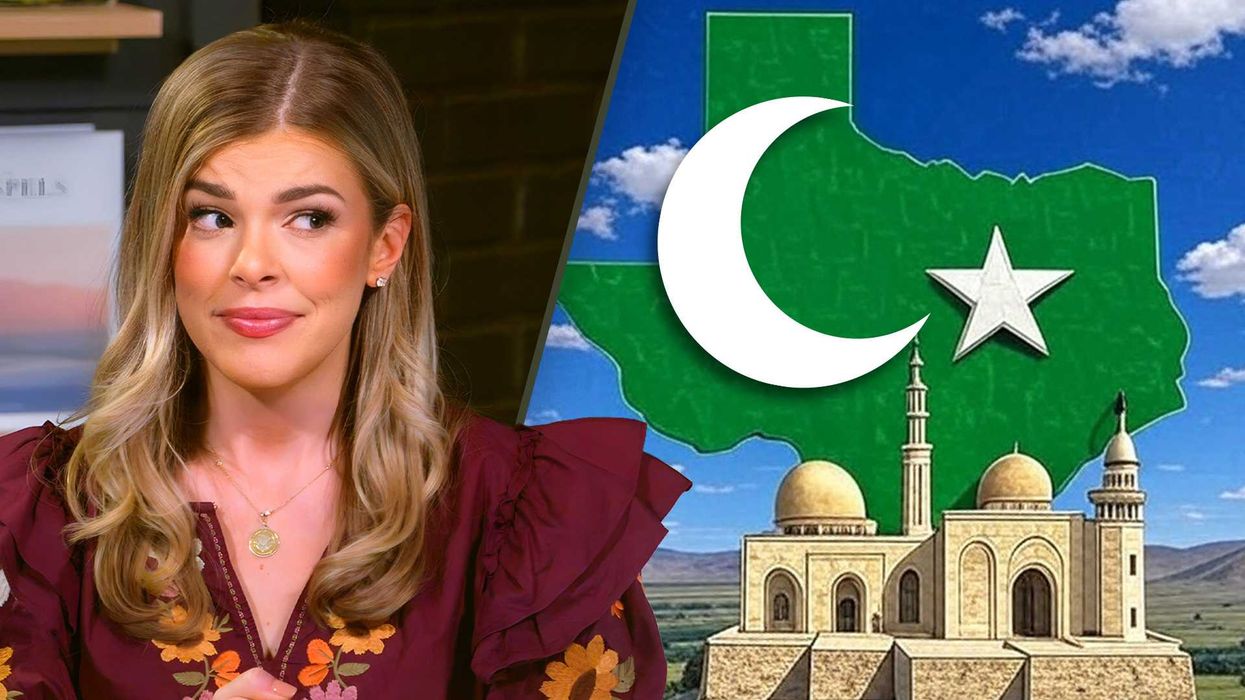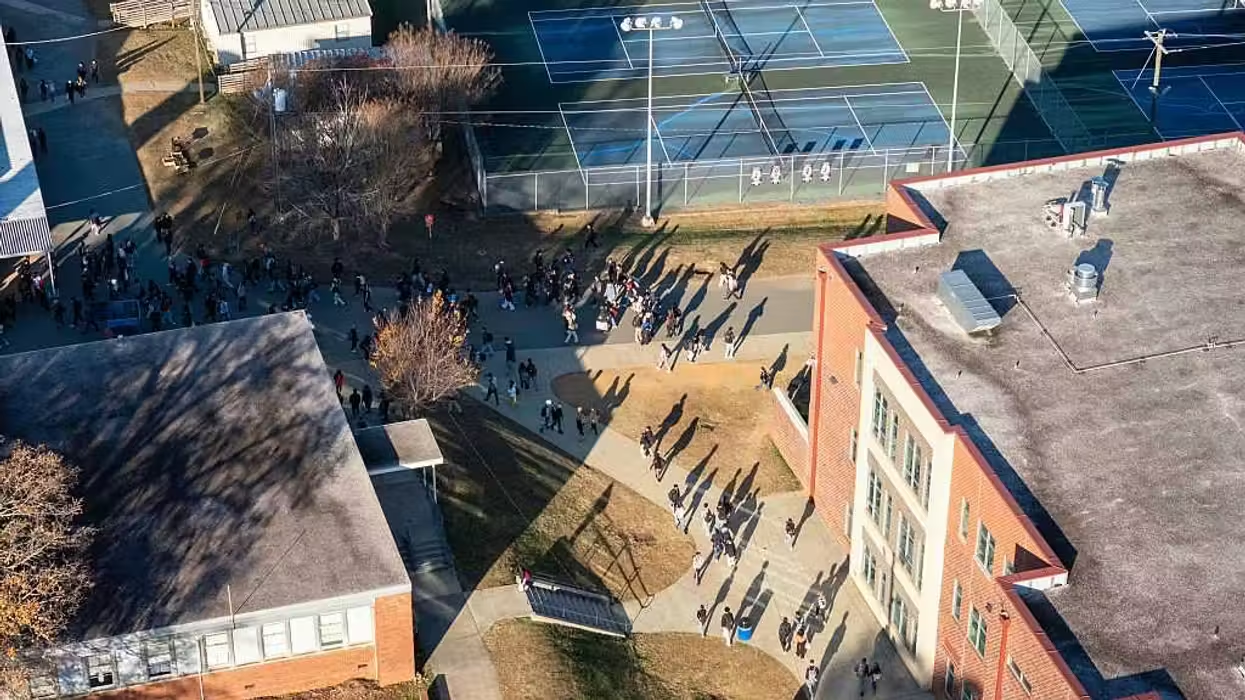RIO DE JANEIRO (TheBlaze/AP) -- Camilo Sandoval says he faces the choice of a lifetime: He can study engineering in college or he can devote himself to the church.
The 17-year-old from Chile is among the multitude of fervent Roman Catholics who have come to Brazil for the church's World Youth Day, and Pope Francis' success in drawing such youths toward the priesthood could be crucial to an institution that is starving for clergy to serve its growing congregations.
"I'm thinking about being a priest," Sandoval said after arriving at Rio de Janeiro's Sambadrome, where much of the Youth Day celebrations will be held. "I feel fulfilled when I participate in vocation days; there is a closeness to God that attracts me. But I haven't decided."
Sandoval's story is like many others and, more often than not, it seems people choose the latter, more secular option. All too many Catholics, from the church's perspective, have chosen this path.
 Pope Francis waves to journalists from a car as he exits "Quinta da Boa Vista" residence on his way to the Aparecida basilica for a mass, in Rio de Janeiro, Brazil, Wednesday July 24, 2013. Pope Francis returned to his home continent or the first time as pontiff, embarking on a seven-day visit meant to fan the fervor of the faithful around the globe. Credit: AP
Pope Francis waves to journalists from a car as he exits "Quinta da Boa Vista" residence on his way to the Aparecida basilica for a mass, in Rio de Janeiro, Brazil, Wednesday July 24, 2013. Pope Francis returned to his home continent or the first time as pontiff, embarking on a seven-day visit meant to fan the fervor of the faithful around the globe. Credit: AP
Nearly 25 percent of the world's parishes don't have a resident priest, according to Vatican statistics. And while the number of Catholics in the world grew by 68 percent between 1975 and 2010 the number of priests grew by just 1.8 percent, according to the Center for Applied Research in the Apostolate at Georgetown University.
Most new priests are coming from Africa and Asia, with a sharp drop in Europe. And there has been "a downward trend" in the number of prospective Latin American priests in the pipeline, said the Rev. Gabriel Villa, who is the executive secretary of the commission for vocations and ministries of the Latin American Episcopal Council, though he said he had no precise numbers.
Stagnant recruitment of priests has contributed to the slump in church membership as a percentage of the population in key nations such as Brazil and even Francis' own Argentina.
For some in the impassioned multitude that greeted Francis in Rio on Monday, the first Latin American pope may be able to change that.
Francis appeals to youth across the globe, but particularly in Latin America. Many pilgrims from the region visiting Rio have said they're excited to have a pontiff who can relate to the everyday challenges they face. The humility and genuine warmth that emanates from him are also big draws, along with the common touch of the man known as the "slum pope" in Argentina because of the amount of time he spent working in Buenos Aires' impoverished communities.
"He is a pope who invites us, who encourages us. He says `you can serve God. You can serve others,'" said Jorge Cavazos, a 34-year-old seminarian in Mexico City who has maintained his desire to become a priest despite more than a decade of scandals that have shaken the church.
 Catholic faithfuls carry the World Youth Day (WYD) Cross that in 1984 Pope John Paul II entrusted the youth of the world, to the stage before the start of the WYD opening mass, at Copacabana beach in Rio de Janeiro, Brazil, on July 23, 2013. The highlight of the landmark visit of Pope Francis to the world's most populous mainly Catholic country will be WYD, a five-day event that kicks off today. Pope Francis's popularity on his Latin American home turf posed a challenge to Brazilian authorities Tuesday after adoring crowds mobbed his car on his arrival on Monday. Credit: AFP/Getty Images
Catholic faithfuls carry the World Youth Day (WYD) Cross that in 1984 Pope John Paul II entrusted the youth of the world, to the stage before the start of the WYD opening mass, at Copacabana beach in Rio de Janeiro, Brazil, on July 23, 2013. The highlight of the landmark visit of Pope Francis to the world's most populous mainly Catholic country will be WYD, a five-day event that kicks off today. Pope Francis's popularity on his Latin American home turf posed a challenge to Brazilian authorities Tuesday after adoring crowds mobbed his car on his arrival on Monday. Credit: AFP/Getty Images
Francis himself is expected to stress that invitation on Wednesday as he visits seminarians in the shrine city of Aparecida. It's a theme he already touched on early this month in a meeting with other seminarians and novices in Rome. The pope urged them to keep "freshness" and "joy" in their lives, saying that when clergy "are too serious, too sad, something's not right here."
"There is no sadness in holiness," Francis said.
Villa blamed the declining interest in the priesthood on the influence of other religions, family disintegration and a growing secularization that has pushed young people to be more interested in materialism than spirituality.
"It's no secret that we are in this situation of consumerism, and a priestly or consecrated life asks people to renounce some things and that's not attractive for many," he said.
The biggest sacrifice for many is the pledge of celibacy, and Francis this month gave little encouragement for those who hope to change that principle, praising chastity in his meeting with the seminarians. "We are victims of a culture of the `temporary,'" Francis said, adding that celibacy vows for those becoming priests or nuns should be a "definitive choice."
The young Chilean, Sandoval, said he had no problem with that.
 Pope Francis blesses a man on July 14, 2013, at the end of his first Angelus prayer in front of his summer residence in Castel Gandolfo, 40 kms southeast of Rome. Credit: AFP/Getty Images
Pope Francis blesses a man on July 14, 2013, at the end of his first Angelus prayer in front of his summer residence in Castel Gandolfo, 40 kms southeast of Rome. Credit: AFP/Getty Images
"I'm OK with taking those vows," said the altar boy and choir member who was drawn to the church partly by a local branch of the Catholic Charismatic Renewal, which has spread across the region, bringing some of the singing, dancing, hand-clapping style of Evangelical churches to parishes across the Americas.
Villa, of Latin America's Episcopal Conference, acknowledged that some Charismatic communities have helped attract priests, but he cautioned that the church urges them to follow the rules established by each diocese rather than venturing into unaccepted new forms of worship.
"Almost all of these movements seek in one way or another to recover some element of early Christianity, be it by singing, by the type of catechism formation, by offering a very deep experience of fraternity," said Rodrigo Guerra, director of the Center for Advanced Social Research in Mexico. "It was said that many people are leaving the church because they find a much clearer human brotherhood in the Protestant world."
 Faithfuls attend the World Youth Day (WYD) opening mass, at Copacabana beach in Rio de Janeiro, Brazil, on July 23, 2013. The highlight of the landmark visit of Pope Francis to the world's most populous mainly Catholic country will be WYD, a five-day event that kicks off today. Credit: AFP/Getty Images
Faithfuls attend the World Youth Day (WYD) opening mass, at Copacabana beach in Rio de Janeiro, Brazil, on July 23, 2013. The highlight of the landmark visit of Pope Francis to the world's most populous mainly Catholic country will be WYD, a five-day event that kicks off today. Credit: AFP/Getty Images
Some remain skeptical even that a pope who has generated wide sympathy can revive an institution that charts its history back two millennia.
"You don't lead a church with beautiful phrases or charisma or with a more parochial attitude like the one Pope Francis has," said Bernado Barranco, a religion expert at Mexico's Center for Religious Studies. For Barranco, the church is facing great challenges because of its limited capacity to adapt to modernity, including not getting rid of celibacy.
But seminarian Cavazos in Mexico City sees a new attitude in the church.
"To evangelize you must be happy," he said.

 Pope Francis waves to journalists from a car as he exits "Quinta da Boa Vista" residence on his way to the Aparecida basilica for a mass, in Rio de Janeiro, Brazil, Wednesday July 24, 2013. Pope Francis returned to his home continent or the first time as pontiff, embarking on a seven-day visit meant to fan the fervor of the faithful around the globe. Credit: AP
Pope Francis waves to journalists from a car as he exits "Quinta da Boa Vista" residence on his way to the Aparecida basilica for a mass, in Rio de Janeiro, Brazil, Wednesday July 24, 2013. Pope Francis returned to his home continent or the first time as pontiff, embarking on a seven-day visit meant to fan the fervor of the faithful around the globe. Credit: AP
